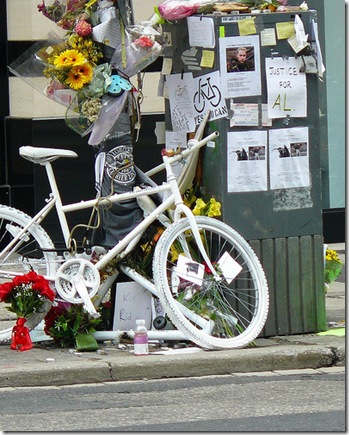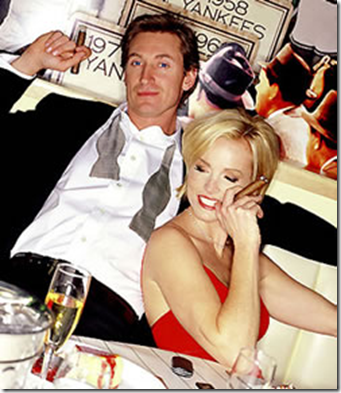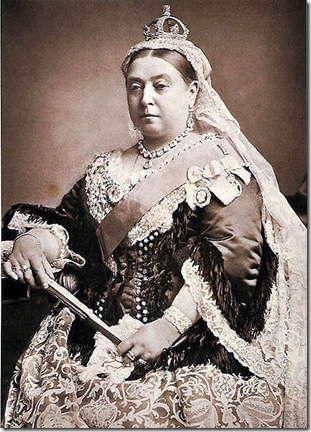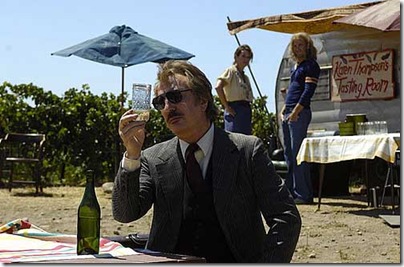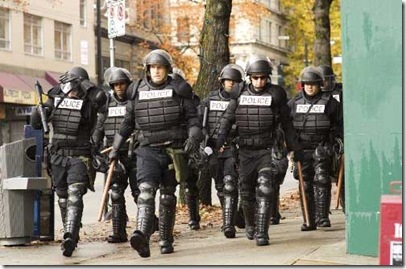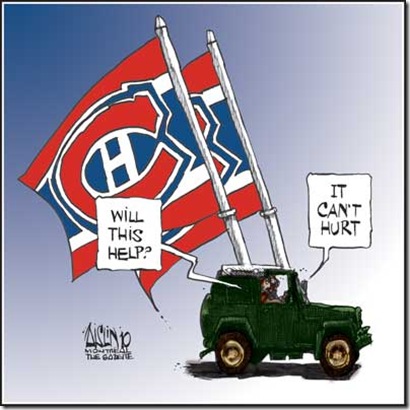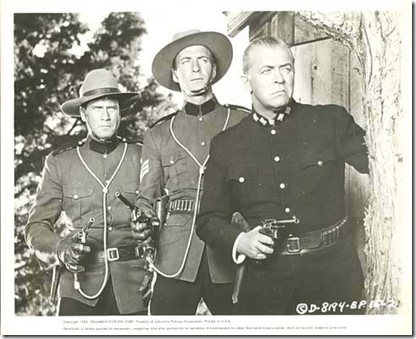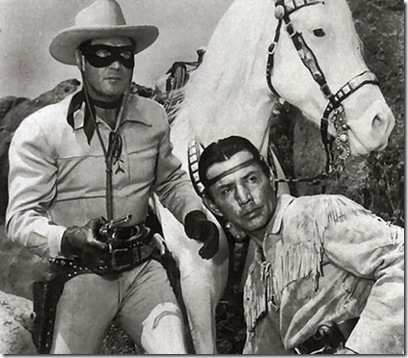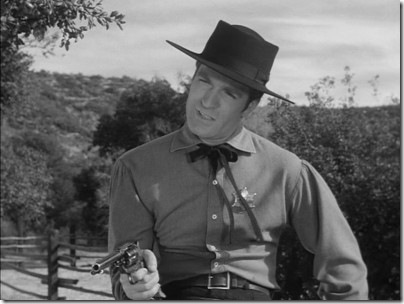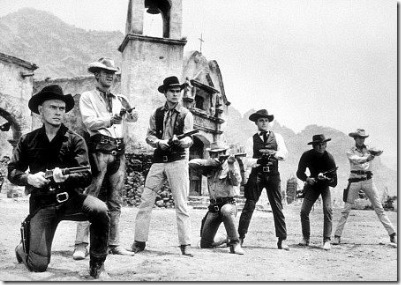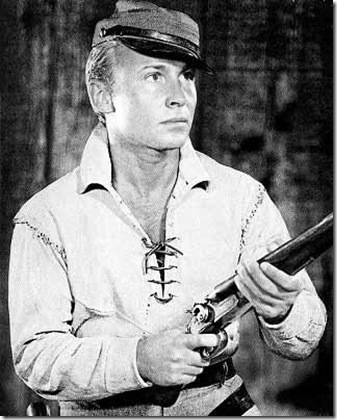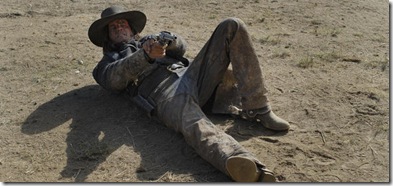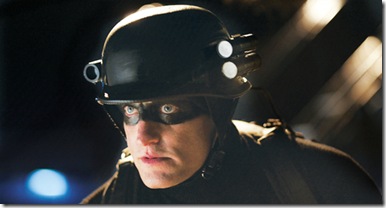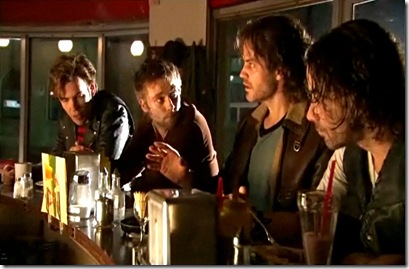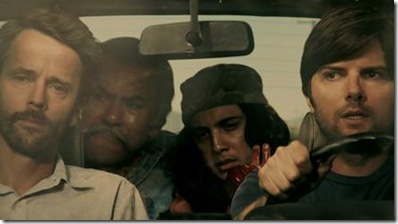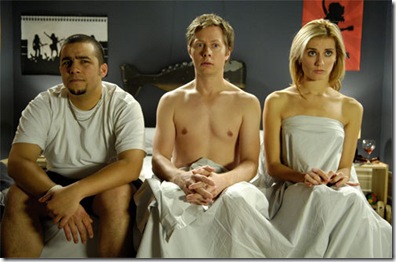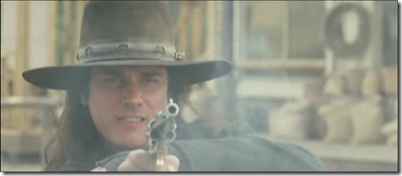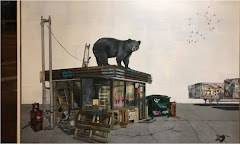Actually, the answer is complicated. Or maybe it's not…
Sunday, May 30, 2010
Thursday, May 27, 2010
Sometimes The Dragon Wins
Back when I used to shadow Homicide Squads for a TV show, there were two items you found pinned to every squad room bulletin board. One was a cartoon, so over photocopied it was barely legible, depicting a half swallowed frog strangling the stork that was eating him under the slogan "Don't Ever Give Up".
It was a reminder to every exasperated/frustrated detective that if they ever lost the will to fight for their victims, the job would eat them alive.
The second item was far more poignant. It was four words: "Sometimes The Dragon Wins".
As in -- sometimes there is no happy ending. Sometimes good does not conquer.
Yesterday, in Toronto, the Dragon won.
Last August, on a night as sweltering as the current heat wave enveloping this city, a terrible tragedy played out on our streets. In a traffic congested town all too familiar with animosity between cars and drivers and those riding bicycles, a collision between those two "cultures" ended in the death of a bike courier named Darcy Allan Sheppard under the wheels of a stylish sports car driven by the province's former Attorney General, Michael Bryant.
Although eye witnesses differed on details and the street surveillance cameras caught only blurred, silent portions of the action, the basic story was that a confrontation between the two (as Bryant drove his wife home from celebrating their anniversary) culminated in Sheppard hanging onto Bryant's Saab convertible as the car sped along the "Mink Mile" of Bloor Street, the city's most exclusive shopping district.
Again, depending on which bystanders you believe, Sheppard gained control of Bryant's steering wheel or Bryant attempted to shake him off. Either way, Sheppard struck a fire hydrant, lost his grip and hit his head on the curb before the rear wheels of the car went over him.
Bryant drove a further block to a local high end hotel, dialed 911 and turned himself in.
It was a shocking incident that polarized the city over questions of class and culture and how the competing agendas of drivers and cyclists had come to this. Bryant was charged. Vigils were held by cyclists. Newspapers and talk radio debated whether Bryant's social status or Sheppard's outlaw reputation would make a difference to the jury and the verdicts.
It never came to that. Our own version of "Bonfire of the Vanities" never got to the courtroom scenes.
Yesterday, a special prosecutor brought in from Vancouver to try the case dropped all charges against Bryant insisting that there was "no reasonable prospect of conviction".
And maybe that's true.
I'm a driver in Toronto and I don't have a lot of time for most of the people I encounter on bicycles. When I was a kid in Regina, your bike needed a license so people could report any missteps you made. You also needed to be equipped with a light, a horn or bell and rear reflectors, making you easier to see and in a better position to warn those who didn't that you were there.
None of those things are required in Toronto, partly due to an aggressive cycling lobby. So, like most people who drive in the city, I've had my share of close calls with bikers and been forced to watch them fly through stop signs or zip the wrong way down a one-way street while I have to obey the traffic rules.
Bike couriers are among the worst offenders. Guys trying to do an impossible job to be sure. But also a tribe that includes a few with little use for the conventions of society. What happens on the pavement aside, you don't have to spend much time downtown without being yelled at for being in their way on the sidewalk or almost mashed as they push their bikes into an elevator on their way to a delivery.
As early stories came out that Sheppard had been drunk and police had asked him to leave his girlfriend's apartment earlier in the evening, more and more people wondered how they would have reacted had they encountered him while they were vulnerable in an open car with their wife.
It certainly would have been difficult to find a jury who hadn't heard about or formed a personal opinion about the case.
That said, as the special prosecutor detailed his reasons for dropping the charges, it was hard to feel like justice was being served, or that we're all still somehow equal in the eyes of the law.
I don't know why a "special prosecutor" had to be brought in to handle the case, although it makes sense that you can't have a local Crown prosecuting his former boss without somebody questioning the possibility of impropriety. But when this special prosecutor detailed his reasons for dropping charges, I couldn't help feeling a greater impropriety was taking place with somebody in charge who would never need to face much local scrutiny or accountability.
Instead of making sure Michael Bryant didn't get preferential treatment, what was revealed yesterday suggested that's exactly what he received.
Prosecutors and Bryant's legal team seemed to share an inordinate amount of information and a lot of time and money was spent investigating the character of the deceased while hard forensic evidence (or the fact it had never been collected) seemed of lesser importance. It was as if both sides were trying the case in private, searching for a path to make it all go away.
They quickly found it in the personality of Darcy Allan Sheppard.
Shortly after the incident, other drivers recognizing him from photographs came forward to describe being similarly attacked. With their assailant unable to argue the charges, and since none of them ever made a formal complaint to the police prior to his death, there's no way of proving their attacker was actually Darcy Sheppard, or if he was even at the locations of the attacks at the times they occurred.
A lawyer with a firm whose offices overlook the downtown street corner where bike couriers gather snapped several pictures of Sheppard allegedly attacking a driver who was on the wrong side of the street (photo above). But like those drivers, he didn't do anything with the photos until after Sheppard was dead.
Now, doesn't that strike you as odd? Why claim what you photographed is an altercation between a courier and a motorist, even though you couldn't hear what was said, don't know what precipitated it or even if it was a guy just horsing around. How is that evidence of anything?
What's more, if you're a lawyer in that neighborhood, it's quite possible the self same miscreant courier picks up or drops off packages at your office from time to time. If you've got a record of somebody that belligerent, aren't you doing something to make sure he doesn't come around your place of business -- like finding out who he is and maybe calling his boss?
Yet according to interviews with Sheppard's employers, everybody liked him and nobody ever complained about him.
Still, this was enough for the special prosecutor to ignore standard legal practice which does not allow you to introduce evidence of past behavior as proof that the guy "was a shit and deserved what he got". Yet he did so by quoting an obscure 30 year old case where exactly that was allowed because the actions were "highly distinctive or unique as to carry a signature".
Funny how that's never been allowed in trials of gang shootings. But anyway…
Verifiable beyond a reasonable doubt or not, the testimony of these individuals was accepted as enough for the prosecutor to conclude that Darcy Sheppard "was the aggressor in the confrontation that resulted in his death".
But that ignores the physical evidence available -- or which was never obtained.
Here's surveillance video of the accident.
The first segment shows Bryant's 1995 Saab convertible waiting at a red light as Sheppard pulls into the lane in front of him. Bryant claims that at this point his car stalled and in starting it, it jumped ahead touching Sheppard's rear tire. So far, no harm, no foul -- although Bryant has struck a cyclist.
He claims the car stalled a second time and when the car restarted it jumped ahead again -- this time for NINE METERS. That's 27 feet. About 2 and a half car lengths.
Now this strikes me as odd for two reasons. Y'see, I used to drive a 1996 Saab convertible, virtually the same car Bryant was driving. And on the rare occasions when it stalled, two things happened:
1. The Headlights flickered and dimmed.
2. You can't start a Standard transmission car without the clutch engaged or the shift in neutral, both of which prevent it from moving forward.
But in the video, Bryant's headlights don't dim and the forward motion appears to be the result of ACCELERATION.
So did Darcy Sheppard initiate the confrontation, or did something else happen?
Bryant stated that he witnessed Sheppard tossing things on the road and interfering with other traffic. Then this guy was in front of him. Any chance there was a "love tap" to teach him a lesson and maybe a second one after something was said to really make the point?
We'll never know that either, because Michael Bryant will never be cross-examined under oath.
And nobody said much yesterday about his personality beyond what a fine, upstanding member of society he is.
Nobody mentioned that he was known for his "pugnacious streak" or had been an amateur boxer. Nobody mentioned how tough and outspoken he'd always been as a politician, pushing a ban on pitbulls, championing a law to seize the cars of street racers and not only crush them but "crush the parts". Not the sort of guy you'd expect to back down from a scrap or suddenly panic.
What really made him cover those initial 27 feet shown in the second part of the video, ending up with Sheppard sprawled across and then tumbling from his hood?
Was he drunk? Don't know, despite an accident in which there had been a loss of life, the police never administered a breathalyzer test or took a blood sample. In fact, they never even took a formal statement from him.
Was he telling Darcy Sheppard, as he had made clear to many political opponents, that he wasn't a guy you fucked with?
If he did, the moment the cyclist was on his hood, he had to know he'd gone too far. I would have and I'm not a lawyer. But his next decision was clearly to leave the scene of the accident -- another criminal act. And the video shows that he made that decision before Sheppard had even risen to his feet.
Before the biker is any kind of a threat, Bryant is reversing his car and high-tailing it out of there.
Sheppard made the fatal mistake of grabbing the car. To stop the man who attacked him from escaping? To exact revenge for being rammed? To be reimbursed for his crushed bike? We'll never know.
What is clear is that Bryant then travelled the length of a football field with a man hanging onto his car. According to the forensic report, the vehicle never exceeded an AVERAGE speed of 34 Kph.
Notice that interesting attempt to sell a low speed incident there?
Average speed 34 Kph. Which since we started at zero means we had to get to 68 Kph in order to "average" 34.
0-68 IN 100 METERS. That's a man standing on the accelerator of a 1995 Saab, if his ran anything like my own in the summer of 2009.
Witnesses you can find in other Youtube clips describe Sheppard as "hanging on for dear life". Was he trying to get control of the car by this point or simply desperate for a better hand hold. Again we'll never know.
All that is inarguable is that whatever was happening with the steering wheel, the guy with his foot on the gas was speeding up, and making Sheppard's situation more precarious.
At what point did he know that it was more dangerous to let go than to keep hanging on?
But the special prosecutor dismissed what the witnesses said they saw anyway, calling them "inconsistent".
This guy is some kind of top notch criminal lawyer and he doesn't know what any cop, any lawyer or anybody who has watched more than one trial can tell you with absolute certainty -- witnesses rarely tell the exact same story.
And so, Michael Bryant is a free man with no criminal record. And maybe that's a case of "But for the grace of God…" and maybe it's a guy with friends in high places looking after him.
Sometimes there is not even a pretence of Justice.
Sometimes the Dragon wins without even trying.
Or maybe it's becoming the Dragon's time, a time when we shouldn't look for him to lose anymore.
I've just finished reading Michael Lewis' brilliant book, "The Big Short" about the subprime mortgage trashing of our economy that still hasn't seen anybody charged two years after it happened.
Tonight's news features the Canadian government spending $1 Billion for security alone at next month's G20 conference. Something the city of London accomplished for 1% of that cost a mere 2 years ago.
Included in that expense are tens of millions to make sure the food consumed by the visiting dignitaries is "safe".
Funny how there's money for that and none for the hundreds of thousands of Aboriginal Canadians who've been boiling their drinking water for my entire lifetime, nor any for the hundreds of thousands depending on food banks ever since some of those same dignitaries tanked their livelihoods.
"Connected Guy Found Not Guilty" shouldn't be a headline that surprises anybody these days, least of all me.
What's different here is that even the pretense of fairness is gone. Nobody even tries to sustain the myth that we're all equal any more.
You always knew there was an "us" and a privileged "them". But you could hope there was some balance or at least an occasional reckoning.
There isn't anymore.
It's their world now. We're just allowed to live here.
For now.
UPDATE:
Not 48 hours after the special prosecutor ruled there was "no reasonable prospect for conviction" in the Michael Bryant case, the veracity of two of the six motorist statements used to establish a negative pattern of behavior for Darcy Allan Sheppard have been called into question.
And as some have claimed (including commenters here) that such introduction of past behavior is not as rare in our courts as it might appear to us neophytes in the world of jurisprudence, nobody has offered an explanation as to why this tenet of the law never seems to come up with anything approaching regularity in the trials of gang members, drug dealers or sex offenders.
But for more on the legal aspect of the decision, by a mind far more adept at dissecting how the justice system works in Ontario than I'll ever be, I urge you to read what is posted here.
It's hard to read this content alongside the editorials rationalizing the dropping of charges in this weekend's Toronto newspapers and not come away with the tragic feeling that our courts are not the place where any of us should expect to find justice nor our press not in servitude to something other than the truth.
My apologies if accessing the material makes you feel as incredibly sad as it did me.
But maybe that's where change begins…
Once the Dragon has been revealed, he's suddenly less a mythical figure than a common reptile unable to actually breathe fire and with scales less impervious to attack.
FURTHER UPDATE:
The more you research the dropping of charges against Michael Bryant, the more you come to believe that the special prosecutor and the Ontario justice system cornered the market on white wash and didn't use it sparingly.
And on top of that -- the more you wonder why not one of Toronto's media outlets is willing to question or further investigate what went on.
Here are some things you might find interesting…
Apparently, the Canadian Press filed a "freedom of information" request regarding the special prosecutor that the Province of Ontario declined on the grounds that it was "related to the prosecution". Now that the prosecution is over, it'll be interesting to see if CP or anyone else re-files that request.
I finally found a copy of the "Executive Summary" of the case here. One of its stunning revelations is just how tenuous the "prior actions of the deceased" which were used to dismiss the charges really are. We were told that "Mr. Sheppard had at least six altercations with other motorists" prior to his death.
While it doesn't appear that charges were filed against the deceased in any of the incidents nor any complaints made to the police, the statements were accepted as accurate and reliable. Yet, they include an incident dated only as "several years prior" involving a 76 year old female driver who did not ID Sheppard until after his death and another in which the complainant thought her attacker was Sheppard but "was not entirely certain".
In another portion of the summary, the Special prosecutor states that "forensic evidence has demonstrated that the Saab (Bryant's car) did not rub against the curb or mount the curb at any time" while discounting testimony by witnesses that the driver was trying to use street furniture to knock Sheppard off his car.
Nowhere does he explain how then, Bryant's car sustained the scrapes and dents visible on the night in question.
Curiouser and curiouser…
Wednesday, May 26, 2010
Hockey Pool Pt.2 "The Finals Props"
There's an old actor's adage to describe the shortness of the average Thespian's career, "One day you're standing in the wings -- and the next you're wearing them!"
Likewise, it feels like mere days ago we had 16 teams in the Stanley Cup hunt and now we're down to two.
A lot of people predicted Chicago would be the best of the West. But nobody expected the East would be represented by Philadelphia. For all the Canadian media obsession with the Montreal "Cinderella Story", the real fairy tale seems to be unfolding further South with the Broad Street Bullies eschewing their traditional Ugly stepsister role to slide on the glass slipper.
Winning the last available playoff spot on the last day of the season in a shootout. Knocking out the league's top goalie in the first round. Coming back from 3-0 against Boston and then turning their Cinderella rivals into a pumpkin.
Good as Chicago is, I wouldn't underestimate these guys and the Byfuglien/Pronger battle in front of the net shapes up as being one for the ages.
And since The Infamous Writer's Pool has not achieved similar status this season, it's time to toss in the traditional final round contest -- "The Props".
For those of you unfamiliar with the concept, a little history.
Betting on sports has been around as long as there have been guys who needed to pump up their self-esteem by proving they were right about something. And for centuries money changed hands based on who won or lost a contest. Then Las Vegas and the Superbowl were invented. Pretty soon the smart guys who ran the Casinos realized that while you could make millions on who won a football game, you could make Billions with side wagers.
So Proposition Betting was created to give us sports degenerates an opportunity to blow our money on outcomes nobody in their right mind can confidently predict.
You might be wagering on the coin toss (Janet Gretzky's favorite -- seen here at Caesar's Palace with absolutely non-betting husband and Hockey Great One Wayne) or if a touchdown is made by a player whose jersey number is over 30.
Props are also not one bet options. You need to pick at least a half dozen. The odds of collecting on your bet are infinitesimal. But then, you can't put a price on a good time, can you?
So here's how the "Infamous Writers Pool Hockey Props" works…
There are six bets. All are related to the Stanley Cup Finals.
Some require sports knowledge. Some only require guts! The player with the most correct answers wins. And a special piece of Canadian Hockey memorabilia (currently treasured by Yours Truly) will be awarded to the winner.
Should there be a tie -- uh -- we'll figure that out if there's a tie.
But this contest is definitely going to come down to the final game!
Entry is open to all current pool players, everybody who’s been kicking themselves for not getting in on the original action and anybody else who just needs to boost their self image.
Entries must be sent to seraphic@sympatico.ca anytime between now and the first faceoff of the Game One on Saturday night.
Your six Hockey Propositions are:
1. The 2009-2010 Stanley Cup winner will be decided in:
a) Four Games
b) Five Games
c) Six Games
d) Seven Games
2. The total number of goals scored in the Final series will be:
a) Less than 20
b) 20 to 30
c) More than 30
3. Chicago's Jonathan Toews enters the finals with a 13 game scoring streak. The current record is a 15 game streak. Toews will:
a) Not break the record
b) Tie the record
c) Beat the record
4. "Hockey Night in Canada" icon Don Cherry always confidently predicts the winner of each game prior to the opening faceoff. For the FOURTH game of the series, he will be:
a) Correct
b) Incorrect
For non-Canadian players -- CBC's "Hockey Night in Canada" is streaming all games at http://www.cbc.ca/sports, usually in more languages than English.
5. The Leading Scorer in the final series will be:
a) Jonathan Toews (Chicago)
b) Patrick Kane (Chicago)
c) Mike Richards (Philadelphia)
d) Danny Briere (Philadelphia)
e) Other
6. The Captain of the winning team is the first player to hoist the Stanley Cup and skate a victory lap. The Cup is then passed to each member of his team. And it's usually passed to someone the player with the Cup feels is deserving. The Goalie of the winning team will be:<
a) One of the first six players to hoist the Cup
b) The Seventh to Twelfth player to hoist the Cup
c) One of the remaining players to hoist the Cup
Tough enough? C'mon, suck it up! How often are you gonna get a chance like this?
Sunday, May 23, 2010
Lazy Sunday #120: "Victoria, 'toria!"
"Long ago life was clean
Sex was bad and obscene
And the rich were so mean
Stately homes for the Lords
Croquet lawns, village greens
Victoria was my queen
Victoria, Victoria, Victoria, 'toria"
While the rest of Northern Hemisphere has to tough it out for another month, this weekend marks the official beginning of Summer in Canada. Think of it as a kind of seasonally adjusted rate for a country that doesn't get as much Summer as most.
The May 24th Weekend is affectionately known as "May 2-4" here, meaning you pick up a 24 case of beer and head to the cottage, lake, beach, woods, whatever and drink all of it while setting off enough fireworks to traumatize the dog until you ignite the next barrage on July first.
Officially, the weekend is set aside to honor Queen Victoria even though, despite being Queen longer than anybody ever, she never once dropped by to visit.
But then, that's us, friendly and forgiving to a fault; as well as open to any excuse to get drunk and play with explosives.
If you have never visited Canada but would like us to name a three day weekend after you, just let me know and we'll light the fuse.
During one lost V-Day weekend in my youth, I remember baking on a beach while learning the chords to a song called "Victoria" because it seemed like a fitting anthem for the occasion.
And it was -- "Victoria" was written by Ray Davies of "The Kinks" as the opening track to their 1969 concept album "Arthur (or -- The Decline and Fall of The British Empire)". And of course, Ray, whacked as he was (is), decided to open his story at the height of Britain's empire in celebration of its prudishness and paternalism.
"I was born, lucky me
In a land that I love
Though I am poor, I am free
When I grow I shall fight
For this land I shall die
Let her sun never set
Victoria, Victoria, Victoria, 'toria"
I LOVED "The Kinks" when I was growing up. I don't know exactly why. They came off as about the most pointless band you could imagine trendy and too serious about music teenagers embracing. Their own Musicians Union BANNED them from touring North America at the height of the "British Invasion" because they were just too damn rowdy onstage.
And their musical evolution was almost beyond comprehension. The distorted electric riffs of their first hits "You Really Got Me" and "All Day and All of the Night" gave way to lilting ballads like "Waterloo Sunset" and "Sunny Afternoon" before taking a sharp left turn from "Lola", a song about transvestites, to bizarre Music Hall tinted social commentaries like "Well Respected Man" and "Dedicated Follower of Fashion".
But the Kinks were also infectiously fun, subversive with a great guitar hook and blessed with the kind of gentle humanity you'll find in "Come Dancin' " , probably the best song ever written about dating.
So for me, this weekend always includes the following lyrics…
"Canada to India
Australia to Cornwall
Singapore to Hong Kong
From the West to the East
From the rich to the poor
Victoria loved them all
Victoria, Victoria, Victoria, 'toria"
C'mon, it's only fitting --- the woman was married to a guy who had a dick piercing named after him. You know she had a few Kinks of her own.
And probably liked fireworks too!
Enjoy "The Kinks" and Enjoy Your Sunday. (Plus Monday if you live in Canada).
Saturday, May 22, 2010
Pool Standings Wk5: At Least Somebody's Having Fun
As Uncle Willis correctly assessed the situation a few days ago, this year's pool has kinda slid sideways. And the fact that I'm in 3rd place is proof positive that the Hockey Gods have been tinkering with the Laws of Probability as well as Karma.
And yet, I don't get the sense anybody is losing interest in how this weird post-season is playing itself out. Even though almost every game in the final conference rounds has been a blow-out, there's still a feeling that nobody has a lock on getting to hoist Lord Stanley's mug.
Can Chicago keep tying up Joe Thornton forever? Which white hot goalie in the Eastern final is going to flame out first? Tempers are fraying. The character of guys who haven't come this far to lose is starting to show. I'm thinking we've got some spectacular hockey coming in the next few days.
None of these teams know how to roll over and die.
And also coming for you guys who are feeling out of the race is your opportunity to redeem yourselves. With the final round comes the Infamous Writers Hockey Props, with more tests of your game prowess and bigger prizes. And even if you didn't enter a team in this year's pool, you're eligible to participate.
More details once we get past the semis.
This week, Foster and Pascoe continue to duke it out for the lead. But there's a dark horse coming up behind them. One injury or one forward going cold and there could be a whole different outcome.
That old T-shirt that read "Hockey is Life" spoke a great truth. Because in Hockey, as in Life -- it's never what you were expecting.
This week's standings:
Thursday, May 20, 2010
Connecting With An Audience
One night about a year ago, I fished the remainder bin at my local Blockbuster and came up with two films I’d meant to see but hadn’t --- “Bottle Shock” and “Battle in Seattle”.
I ended up liking both --- a lot, recommending them to biz associates in the “This is the kind of stuff we should be making” conversations I get into from time to time.
I even wrote a post intended to encourage you to check them out, stuck it on my sidebar and promptly forgot about it.
A week ago, I found that post and was about to dump it when I realized there was a lesson in those movies that might address an increasing concern.
We’re going through a rough patch in English Canada when it comes to getting people to watch the films and TV we make.
The TV bar seldom rises above a million viewers. And we lose the opportunity to ignite new interest because too much broadcast shelf space is taken up by repeats or series that would normally be axed by any industry based on ratings but which get renewed here mostly because the network needs to amortize its investment over a second or third season.
On our movie screens, the situation is worse.
While it makes sense that a film like “Gunless” would fail to find an audience and collapse under its own mediocrity, it’s tough to understand why a singularly original piece like “The Trotsky”, blessed by positive reviews, a spectacular trailer and lots of online heat would attract only paltry handfuls of paying customers at an embarrassingly small number of cinemas.
Part of the trouble “The Trotsky” is having in finding an audience is that it’s a fairly highbrow high concept (a high school kid who thinks he’s the reincarnation of Leon Trotsky).
Nothing wrong with that creatively. But the film is also being sold as home-grown product in an industry that has made a point of repeatedly reminding Canadians how meaningful and important everything it releases is.
This ignores the reality that “meaningful” and “important” are verdicts rendered by the audience. They decide if a movie is those things or if it’s art and especially if it’s worth parting with ten bucks or more to experience in the first place.
Whatever intent might reside in the hearts of a film’s creators, distributors or a well-meaning government bureaucrat means nothing in the final analysis.
The audience always decides.
But, unfortunately, the Canadian film industry has followed a “Top Down” approach to production and marketing for a long time now, following the Family Compact tradition of knowing what’s best to maintain peace, order and good government among we hewers of wood and carriers of water.
We’re also a society that has been taught to endlessly seek affirmation and approval. And if that can’t be found from outside, its provided to us from above.
So people in the government's employ here have become our “deciders”, doing so through various forms of bureaucratic activity be it funding allocation, regional needs or prevailing government sentiment with regard to what’s best for us to embrace; continually reminding us on a film’s release that its content is elevating, earnestly reflects our best traits or has been acknowledged by international festival juries.
Unlike countries whose successful entertainment industries built themselves from what the local audience would eagerly pay for and then kept challenging them (the way artists do) to expand their tastes and interests; we took an elitist approach and ended up alienating the very people we most need in order to succeed.
Therefore, when “The Trotsky” comes along, it not only has to deal with the inevitable “Who’s Trotsky again?” “I never heard of the Russian revolution, so will I get the jokes?” questions; it is also saddled with differentiating itself from Canadian “comedies” that came before and bored the asses off the people now scanning the multiplex marquee for something to entertain them.
There’s probably no better example of this process than the way we approach historical drama. Almost everything in that genre made here is also “Top Down” concentrating on our political notables and their achievements, “Trudeau”, “Rene Levesque”, “Tommy Douglas: Prairie Giant”, “Elijah”.
No soul shattering “Hotel Rwanda” version of some African massacre for us either. We might “Shake Hands With The Devil” but we have our side represented by a General and keep the encounter clinical and politically correct, avoiding universal truths in order to make sure blame is properly assigned.
SPOILER ALERT: None of it was our guy’s fault despite what a lot of Belgians might tell you.
We also hardly ever look at our history from the point of view of the people who had their lives impacted by such as those listed above, even though its those people who comprise the audience we’re endeavoring to reach.
We have rarely examined our wars through the eyes of ordinary fighting men. No “Band of Brothers” or “The Pacific” or even an "In Which We Serve" or "The Cruel Sea", in the process establishing a distance between what so many experienced but has yet to be dramatized and made relatable to their children and grandchildren.
And as anybody who has written historical drama or even a biopic will tell you, the secret to finding an audience is making the story and characters resonate with contemporary lives.
“Spartacus: Blood and Sand” may be a pot-boiler combination of video game violence, hot sex and B-movie dialogue. But so far, it has stayed true to the historical record. Crixus, Batiatus and Oenomaus --- all real people. The brilliance of the writing and production is that it fills in the gaps in our recorded knowledge with material a modern audience will happily embrace.
The series' success has led to books about Spartacus flying off library and bookstore shelves all over the world. There may be a few readers wondering what happened to the part where Spartacus bangs Ilithyia, but just as many are realizing the corrupt and declining Roman Empire offers insights into our own time.
Likewise, you can’t watch the final episode of “The Pacific” in which the fighting men come home without seeing direct comparisons to warriors returning from Afghanistan or Iraq and gaining greater understanding into how difficult the transition from combat can be for all concerned.
There is no reason Canadian films couldn’t be connecting with Canadian audiences in the same way. Which brings me back to “Bottle Shock” and “Battle in Seattle”.
Both films were made for budgets of $8 Million – about 20% more than “The Trotsky” and 20% less than “Gunless”. So they are not beyond our production norm.
Both deal with events of less than minor importance in the march of history but which remain moments that altered the way we view the world.
“Bottle Shock” is about how the world discovered California wines.
It's a feel-good underdog story told with immense charm and an endearing mood of innocence. Beautifully shot and featuring a bravura performance by Alan Rickman, the cast includes Bill Pullman, Chris Pine, Rachael Taylor, Freddy Rodriguez, Eliza Dushku and Dennis Farina. No doubt all of them enticed by a fine script by Jody Savin, (director) Randall Miller and Ross Schwartz which includes one of my favorite lines about culture -- "You're a snob. It limits you."
Here's a taste…
"Bottle Shock" is both historically accurate and unapologetically fun. It doesn't try to say it is important or meaningful. Its message is simply, "This happened and we think you'd enjoy hearing about it -- perhaps while enjoying a crisp Chardonnay."
I also guarantee that when its over you'll seek out a bottle of Chateau Montelena ($3 a bottle in 1976 and $170 today).
See what a little enjoyable movie PR might do for a non-cultural industry?
And you wouldn't have to look too far to find an almost identical Canadian story just waiting to be told. Mere months ago, a Quebec cheese beat all of its French competitors to be named the best cheese in the world.
I see Don McKellar in the role of a man who knows cheese with the guys from "Les Boys" as Gaspe Dairy farmers and perhaps Pamela Anderson or Kim Cattrall as winsome milkmaids…
Who knows, maybe there's a Quebecois scynariste at work on the project right now. And I hope that's true, because once again, there's little likelihood our "Top Down" regionally fractured subsidy system would support such a project submitted from elsewhere.
That's because our "the only way you can get anything made is with government money" system also forces the bureaucrat green-lighting a historical piece to make sure questions aren't raised about why nobody is making a film about Ontario cheese, Okanagan wines or the Italian discovery that the best pasta flour came from Saskatchewan.
It's always safer for those guys to just stick with politicians. Even if nobody West of Manitoba will bother with a movie about Trudeau and nobody East of it will endure one about Diefenbaker at least you can cover your butt by regurgitating what every Canadian kid has to learn in school anyway.
Like it or not, the unspoken reality of state funded art is that you can't keep politics out of the decision making.
And that means a film like "Battle in Seattle" is unlikely to get any Public funding in Canada. More's the pity too, because this is one of the best films you'll see to gain an understanding of what International Trade Agreements, Corporate Globalism and acronyms like "WTO" and "IMF" mean to all of us.
Written and directed by actor Stuart Townsend, the film takes you into the lives of politicians, anarchists and ordinary people with views from all parts of the political spectrum or no ideological position at all as they confront each other on the streets of Seattle.
Mostly shot on the streets of Vancouver with a Canadian crew, the film is filled with taut drama and chaotic action from stars Martin Henderson, Charlize Theron, Woody Harrelson, Connie Nielsen, Andre Benjamin, Michelle Rodriguez and Ray Liotta; with a gem of a performance by Rade Serbedzija as a doctor begging for AIDS drugs for Africa.
The film's trailer perfectly captures its mood…
That final phrase "The Whole World's Watching" was first chanted on the streets of Chicago in 1968 (coincidentally the 2nd time in my life when I was tear gassed). And it provides a clue to how the same kind of film might be possible here.
Also on the streets of Chicago that night was a cinematographer named Haskell Wexler, who filmed much of the riot as well as the pitched daylight battle between police and protestors in Grant Park.
He took his footage and built a film around it called "Medium Cool" shot on the same locations in Chicago a year later with actors Robert Forster and Verna Bloom filling in the drama interspersed with the riot footage.
We copied this concept during the first season of "Adderly", sending a camera guy to shoot "B" roll of some political summit and ending up with spectacular footage of riot cops, slinky limos and flag festooned avenues, into which we inserted our fictional spies and a concocted international intrigue.
It gave us a level of production far beyond our budget yet cost next to nothing. And the same opportunity, only on a much larger scale, awaits somebody willing to do the same during the G20 Conference in Toronto at the end of June.
Shoot what you can. Add a story later. While the bureaucrats at the CMF will be loathe to come near you, you might have enough to get a private investor to take a chance.
Both "Bottle Shock" and "Battle in Seattle" illustrate ways we might be able to get around the bureaucracies choking off our connection with audiences and lure them back into our theatres.
They also illustrate that our audiences aren't getting anywhere near their money's worth from Canadian films of comparable budget.
How does either film offer an array of marquee names while "Gunless" costs more and stars Paul Gross and virtually nobody else you've heard of?
How does one film recreate the 1970's in both Napa Valley and Paris while the other offers relentless action, yet both cost less than a Canadian one which, while in an easier to replicate period relies on one set and crams all of its action into the final 10 minutes?
Those are things we need to look into as well, but which we can't since Telefilm never tells when questioned on how taxpayer money was spent.
Getting those bureaucratic mentalities out of our industry is the first step to making our audience realize we're just like them and not somebody else from the government trumpeting what's good for them while charging for what they already paid for.
But until we solve those problems --- Go see "The Trotsky" and take along as many friends as you can. They won't be disappointed and none of you will have any trouble finding a seat.
Sunday, May 16, 2010
Lazy Sunday # 119: The Hunt For Gollum
If there’s one thing that rankles most writers of film or Television, it’s fan fiction; that process by which people who liked the world you created decide to make it their own with new stories and characters they concoct to usurp it.
If these are done by those with limited talent or imagination, it’s like watching one of your kids being torn apart and sewn back together by an amateur Dr. Frankenstein. If another screenwriter does it, professional courtesy requires that you refer to it as a “spec script”.
But every now and then, somebody takes your work to places you never imagined it could go, not hacking it up to fit in the tiny box of inspiration they’ve constructed but expanding it into realms you never imagined were there.
I first read “The Lord of the Rings” during my first professional acting gig, huddled in the back of a freezing bus as the company toured a repertory of plays through a Saskatchewan winter. The richness of Tolkien’s “Middle Earth” transported me beyond that frozen wasteland and the daily rigours of tear down, travel and remount required of a touring player.
And, in many ways, that was its original intent as Tolkien wrote much of it in letters to his son, who was serving in Africa during WWII, in hopes of encouraging the young man to keep going and remain positive.
Despite the novel’s enormous popularity, it took more than 50 years to finally reach the screen (a partial attempt by animator Ralph Bakshi notwithstanding) and much of that due to the rights constantly changing hands among wealthy fans, counter culture heroes and even members of the Beatles.
The success of Peter Jackson’s eventual trilogy led to the same flood of imitators who have built entire “fan film” industries around “Star Wars” and “Star Trek”.
But “Rings” fan Chris Bouchard wanted to do something different. With the help of 160 volunteers and at a cost of $5000 he delivered a completely new chapter of the Middle Earth saga with all the art and quality of a completely original work.
The story follows the “greatest huntsman and traveler in Middle Earth” as he sets out to find the creature Gollum, in order to discover the truth about the Ring.
After reaching an “understanding” with Tolkien Enterprises, the rights holder to the underlying material, “The Hunt for Gollum” was released last May, and has since been seen by tens of millions of viewers.
In addition to its worth as a stand-alone entertainment, “The Hunt for Gollum” exemplifies the growing expectation of quality among online viewers when it comes to webisodes, mobisodes and other internet content that’s spun from a successful TV series or film. And that makes it imperative viewing for anyone currently developing a web series or show related web content.
The full 40 minute version of “The Hunt for Gollum” can be found all over the internet, with a HD version here.
But here’s a taste of what awaits. Fan fiction worth celebrating. Enjoy your Sunday.
Friday, May 14, 2010
Pool Standings Wk4: The Mighty Smurfs Strike Back
I’m torn between jumping on the bandwagon and asking somebody in Montreal to pick me up a free pair of Reeboks if the Canadiens get through the next round.
The media here are calling the surprising Montreal Canadiens Giant Killers and Smurfs (because of how small most of them are) and if the Cinderella run continues we know we’ll be treated to endless essays about how nobody thought to measure the size of their hearts. On ESPN, Barry Melrose is doing his e-trade baby shocked expression (not seen since the last time somebody said they thought he could coach).
All I’m seeing is a team that came to play taking the ice against guys who’ve been reading too much of their own press.
But that’s the beauty of hockey, isn’t it? Four and a half million Canadians showing up to root for an 8th seed team. And you can bet there will be even more of them whether they’re playing the conference final against either the 6th or 7th best team from their side of the season.
Like Canadian show business the game doesn’t draw because of the stars but because the work is worthy.
Over in the West, San Jose laces up against Chicago, the two top seeds over there. Lots of stars, to be sure. But the game here is between those who have underachieved and might be sensing their last shot versus some new guys determined to make a name for themselves.
This is gonna stay fun on a whole lot of levels.
Though maybe not for everybody in the pool. We’ve got five guys already out, doomed to slowly sink to the bottom as those remaining outpoint them. And not one Smurf Nation believer in the bunch. Goes to show that you can’t go with the chalk when it comes to picking a pool roster.
But I don’t want you guys to give up and go away. We’ve still got Props coming up for the final round. So your opportunity to pick up some hockey swag is not completely lost.
This week in the Pool, Mike Foster continued to pull away. But like three-peat contender Will Pascoe, who’s right behind him, he’s only got players from one team remaining. So there are still other guys with a good shot of turning the standings around.
That shakeout should be happening by the time Willis posts his update next week.
Meantime, enjoy the hockey and the media frenzy.
Oh, and those Reeboks need to be a Size 7 --- I’m a bit of a Smurf myself.
Tuesday, May 11, 2010
The Code of the West
There were cowboys where I grew up. And the landscape wasn’t much different from the scrub brush Roy and Gene and Hoppy rode through nightly on my TV set. You could forgive a kid for blurring the lines between what was real and what only happened in Western movies.
And maybe that was a good thing.
In 1959, I was nine and already addicted to television. That was also the year when Westerns reached their peak of popularity on the tube. There were 26 of them in Prime Time. 26 different hours and half hours every week when there were still only three American networks to choose from.
The modern comparative would be to give every single reality show a cowboy motif. “Jersey Shore” in ass-less chaps and “Celebrity Apprentice” on horseback.
Kids my age were literally submerged in the genre. And there’s no doubt we transposed a lot of what we learned from all those dusters into what we thought was the right way to operate in the real world.
Not all of us, of course. Many weren’t as young and impressionable or glued to the TV three hours a day.
A lot of books have been written about the influence of Westerns on our culture and how they formed so much of our collective character.
One of the best is “The Lone Ranger’s Code of the West” by Jim Lichtman, an ethics specialist, and based on the moral and ethical standards built into the original Lone Ranger TV series.
As part of his business seminars, Lichtman used to ask his audiences how they would react if they heard that the Lone Ranger had recovered a stolen payroll but before returning it had deducted expenses for items like silver bullets and tacked on a 30% finder’s fee for he and Tonto.
His clients always insisted the Masked Man would never do anything like that; that he was above such petty self-interest. This led Lichtman to finally codify what had always been the unspoken “Code of the West”.
Lichtman’s version of the Code breaks down to three main points:
1. The Hero considers the well-being of those affected by his actions.
2. The Hero bases decisions on his core values of honesty, fairness, caring, respect and his duty to what needs to be done.
3. If he must make one moral choice over another, the Hero will do what he believes is best for society in the long run.
Those of us who write for television and film readily admit that we build on what came before us. We use past templates to fashion what are hopefully new patterns. But we all know that no matter how much we think we’re exploring new territory, we’re always retracing the path Joseph Campbell mapped in “The Hero with a Thousand Faces”; treading in the well-travelled footsteps Heroes have trod since time immemorial.
But the signposts marking that path are illuminated by Lichtman’s “Code of the West”.
And even though we like our heroes a little more flawed or conflicted these days, the core components of the code apply. Even Tony Soprano and Vic Mackey of “The Shield” embodied a version of the code within their separate realities.
For when a Hero strays too far from the code, he loses the willingness of some to embrace his make-believe world and allow it to influence their reality. In breaking with the code, he also empowers those with a darker agenda.
These are truths that somehow eluded those responsible for last week’s episode of CTV’s “The Bridge”.
I’ve written about “The Bridge” before. After watching a few episodes, I sensed it wasn’t going to get any better and moved on.
But over the weekend, a writer I respect asked if I’d seen Episode #11: “The Blame Game” referring to it as --- “The most offensive hour of television ever produced in this country”.
Since that’s a record I thought I probably held, I went to CTV’s online repository of episodes to see for myself.
I wasn’t prepared for how correct my friend was in his assessment.
If “The Blame Game” is what passes for Canadian drama these days, it’s no wonder we can’t find either an audience or a lot of public support for using taxpayer money to make our shows.
Let me describe the episode. And don’t worry about SPOILERS. Even when you know what happens, you’ll want to see this repulsive piece of shit for yourself; if only to be convinced that it is the actual work of well-paid professionals.
“The Blame Game” unfolds as follows:
Two street cops, Mac and Aziz, attend a stolen car call, turning the case over to two of the series’ regular detectives. While her male partner takes the report, the other detective, Billie, retires to their car to pop some pills and smoke a little crack.
The cops of “The Bridge” apparently aren’t partial to donuts.
A short time later Mac and Aziz spot the stolen car and pull it over. The driver, a black man named Blue, (there’s some foreshadowing in that description) keeps talking on his bluetooth as they try to arrest him, relaying what’s happening to a following car that opens fire on the officers. Blue escapes and Aziz is killed.
Series lead Frank Leo attends the murder scene, conferring with detectives, learning that a street gang is likely involved and Mac is being interrogated by Internal Affairs – something that upsets the police union head because cops involved in shootings aren’t supposed to be interrogated for 24 hours.
Leo interrupts the interrogation where sleazy IA detectives are already accusing Mac of causing his partner’s death. The scene includes lines from Leo like “These are my guys not the Chief’s…” and “I’ve got every cop in the city on it” (looking for the shooters) continuing the show’s delusional reality in which a union rep runs the police force.
Then Leo and Mac break the news of Aziz’s death to his wife. Nice dramatic touch but with no basis in any police reality. Five minutes in, I am reminded that “The Bridge” is self-indulgent fantasy masquerading as cutting edge police drama.
Leo meets the Chief at a cop hangout to discuss the 24 hour rule. Seems the Chief only broke the agreement to pressure Leo into turning over the high society client list of an escort service some cops had been running so he can coerce the johns into helping forward his own political agenda.
Leo is outraged. Not at the shakedown or the reminder that more of the cops he keeps championing are scumbags, but because “I’ve got a cop killer to find” – the series writers and showrunners apparently unaware that he isn’t even a cop anymore.
They saw off at Leo giving the Chief one name off the list --- which Leo just happens to have handy and in lurid detail --- and the Chief backs IA off Mac.
By this point, I’m considering how much of what passes for the world of “The Bridge” is really a recreation of the inner corporate working of CTV, where the squeaky clean image presented to viewers hides a cesspool of lying, backstabbing and predatory violence.
It’s a world where legitimately artists can be coerced into being “politically incorrect” and “edgy” and you don’t even have to pay them that much to whore out their talents.
I’m sorry, but every single scene in “The Bridge” just smacks of people without a clue issuing the marching orders sans regard to what impact or ultimate impression the show they are making might have were anybody (however unlikely in their world) actually paying attention.
Meanwhile, Mac has gone off the rails, mercilessly beating young black men who might know something about his partner’s death.
In the world of “The Bridge” even though other cops know he’s out of control, they just take Mac home or buy him drinks and don’t press any charges.
An early message of the episode is --- don’t be black in Toronto if a white cop is pissed at some other black guy! Oops, wait, I didn’t mean Toronto, I meant --- uh, whatever fictional city this is.
CTV’s original press releases might’ve said it was Toronto but then the rumor was the city threatened to sue over how its cops were depicted or something like that --- because now it’s --- I don’t know, “anywhere” --- except, y’know, an American city since everything about the rest of the show follows Canadian legal and social protocols.
Anyway, the investigation proceeds fingering the driver of the stolen car as a black gang member named “Blue” and hints that more about what may be going on is known by a chop shop owner.
We also learn that Leo cheats on his girlfriend, regularly breaks the law and blackmails politicians. But he won’t tolerate corrupt higher-ups hurting one of “his guys”.
Blue is arrested, but gets out on bail because Mac beat him during his arrest. Yeah, when it comes to a cop killer, that’s gonna happen.
But if it doesn’t the rest of the story can’t unfold as it does.
During this Leo utters a line which epitomizes the moral bankruptcy of “The Bridge”. We’ve seen Mac beat innocent people, try to kill a guy in custody, etc. and Leo tells another cop, “Mac’s only doing what I’d do for you.”
I wonder how many Black kids watching this are having their own suspicions about cops (white ones in particular) confirmed by all this?
But all of that pales with regard to what comes next.
Billie, who’s in charge of babysitting Mac, gets high and loses him.
Mac kidnaps Blue and takes him to an abandoned warehouse (there’s always an abandoned warehouse conveniently available, isn’t there?) where he duct tapes the man to a chair and begins beating him to learn the identity of the shooter.
The man refuses to talk, terrified the shooter will kill him if he does.
So Mac shoots him.
Five times.
Meanwhile, Leo is beating up the chop shop owner in a much more fashionable location than a warehouse. I’m not sure where exactly but it reminds me of the executive suites at CTV. This guy too is afraid to talk insisting the shooter will kill him if he does.
So Leo beats him harder.
With a sledge hammer.
That cinches it. It is a CTV office. Sledge hammers are what they used to sell “Save Local TV”.
Mac then shoots his defenseless prisoner a sixth time and the guy finally spills. Mac texts the shooter an invitation to join them.
The chop shop owner confirms that Blue is stealing cars (something I thought Leo already knew, but anyway) and Mac calls Leo and kills Blue while they’re on the phone.
I’m not sure if the killing had anything to do with Leo trying to talk him out of it by saying “You want to do this, give him a bullet for me”. By this point, I’m so repulsed by what I’m seeing that all rules of story logic have ceased to apply.
Then it gets even worse.
The shooter arrives. He’s a fourteen year old black kid.
Turns out Blue and the chop shop owner were deathly afraid of a Munchkin.
Pinging a GPS location off the cellphone Mac used, Leo and his sidekick turn up at the warehouse.
But they do nothing to help the kid as Mac puts five bullets in the boy’s head at point blank range.
In fact, Leo simply arranges to have the whole thing “cleaned up”.
In the final scene we learn there is no trace of the cop killers and that Mac will soon be back on the job. That’s before Leo intimidates the Attorney General into expanding the 24 hour rule to 48 hours.
My hero….
I’m not going to ask how we sank to this level. I already know. This is what happens when writers and directors and actors are so intimidated by the system they work within that nobody challenges such a despicable misuse of not only our craft but our obligation to the audience.
This is the work that is produced when an artistic community is starved into submission and rendered desperate to simply pay the rent.
Some of those connected with the series are already back-pedalling, claiming it wasn’t their fault. They were only “following orders”. And there really isn’t any point in discovering who’s the Amon Goth in this particular work camp.
But every single artist who contributed needs to start asking when they decided that what they do had no better purpose than paying their bar bill --- and maybe if that bill would be as large if they hadn’t sold out the abilities some higher power or inbred spark granted them in the first place.
I’m not one of those who blames society’s ills on television. But I know it holds a place in the nurture process. And I know what Wyatt Earp and Cheyenne Bodie and Johnny Yuma taught me through that flickering screen.
So should it surprise anyone if some black 14 year old watches “The Bridge” and mutters “Fucking cops” under his breath?
Should it puzzle us when nobody gives a shit about some Afghan detainee beaten with his own sandals after witnessing helpless men being tortured and murdered in cold blood by Canadian cops they’re supposed to be rooting for?
Should any artist in this country be challenged by the cynicism of our audience when stuff like this is presented to them as the best we can do with their tax money.
I’m not saying you need to revert to the “Code of the West”. But as an artist you do need to stand for something.
And if you don’t. Could you get out of the way and make room for people who actually do care and maybe have something more worthwhile to say?
Sunday, May 09, 2010
Lazy Sunday # 118: I, The Jury
We’re coming into “Festival Season” in the film and TV industries. New movies are debuted in the former, while the latter coat-tails to sell internationally what played well at home last year.
A lot of these films and programs will be entered into competitions, hoping to win the kind of recognition that attracts a wider audience.
Sometimes, those awards are chosen by the festival audience, like the rockumentary "Rush: Beyond the Lighted Stage" was this week at the Tribeca Film Festival in New York.
Sometimes the prizes go to films selected by a small jury of film luminaries like the one Tim Burton will captain at the Cannes Film Festival which opens on Wednesday.
But now, anybody with a love of film and connected to the internet can be part of the process.
The National Film Board of Canada, in partnership with the Cannes Short Film Corner, has posted the ten nominees for top honors at the Cannes Marche du Film. You can view and vote for them here or simply be part of the audience by watching them here.
Presented for your adjudication are ten films from young filmmakers around the world. Some are live action, some are animated, some have formats still to be defined. One was even originally shot in 3D. It’s a rich buffet, with each selection leaving you wondering how you can possibly compare it to what you just saw.
But that’s what being the member of a film jury requires.
How do you decide that a heartfelt drama deserves more attention than a laugh filled comedy?
Was more artistic talent required for 5 minutes of animation or 10 minutes of wrangling actors on a complicated location?
Which has more impact, a breathtaking vista or a lingering close-up?
It’s all subjective. Everything comes down to which one most enriched your own life.
Canada’s entry “The Technician” looked like it was taking my vote for most of the competition. But then another stole my heart.
Alessandro Celli’s “The Report Card” from Italy got my vote in the end. But like all Jury decisions, that’s one vote among many. Your taste may run in a far different direction. But no matter how much we differ, I’m certain there will be something here that makes your day.
So sign up at the NFB site and cast your ballot. Votes can be submitted until May 17th and the winner will be announced when the Cannes Film Festival closes on May 23rd. Please take part.
You could help kick start some budding filmmaker’s career.
But most of all you’ll --- Enjoy Your Sunday.
Friday, May 07, 2010
The Nashville Flood
It’s been a busy week in the news. Used SUV bombers. Fat fingered brokers. Oil spills. Greeks lighting up more than a Saganaki cheese. And, of course British “Hung” Parliaments.
And does it not reveal something about our national self-esteem issues that Canadians feel they’re saddled with a “minority” government while the British refer to the same thing as being “Hung”?
Anyway, with all that going on, you can be forgiven for missing what happened in Nashville.
You also could’ve missed it because it barely made the news. I’ll never fully understand how news editors prioritize what goes on in the world for an evening newscast.
Sometimes it’s your basic “If it bleeds, it leads”. Sometimes it’s a story they know the other networks don’t have, or a spin that will appeal to their core demographic.
Over at the CBC, it probably doesn’t get much better than: “At the end of the day: Rahim Jaffer, Ms. Guergis - Cocaine? Hookers?” --- one of their little promotional gems this week.
But back to Nashville, where the Cumberland River overflowed its banks taking several lives as it flooded a thoroughly modern city and caused Billions of dollars in damage. It was a disaster of biblical proportions.
Yet according to those who count such things, it only resulted in 15 minutes of national news coverage on TV network news services.
Oh, CNN and Fox were there on a semi-regular basis. But even they had other, more pressing priorities. One of the largest natural disasters in American history was happening --- but unless you lived in Nashville, you would never have known.
Is it any wonder that fewer and fewer people are getting their news from television and harbor a growing mistrust of the service they are provided?
On Monday a “60 Minutes”/Vanity Fair poll (and doesn’t those two teaming up speak volumes on current journalistic priorities) revealed that only 13% of those surveyed place great trust in broadcast network news. Only 8% found the NY Times most reliable.
Meanwhile, The Wall Street Journal and Jon Stewart’s “The Daily Show” tied at 4%.
And maybe that tie helps to explain the regularly careening stock market.
But overall, it isn’t hard to understand why people feel the way they do.
More and more, it seems that everybody bringing you the news has an agenda of some sort that’s more important than recounting what actually happened that day. It might be a political agenda that spins a story. It might be a profit driven approach, ignoring anything that shines a harsh light on an advertiser. Sometimes somebody’s throwing as much “scare factor” crap at the wall as they can to frighten an audience into staying tuned.
In Toronto, we have a network called CP24 which would’ve killed for the Nashville Flood. These guys can ruin the sunniest summer day with warnings of the killer thunderstorms which “could be” forming unseen over the lake. To them an inch of snow is a sure sign that frogs and locusts are on the horizon.
In the process, they seem to forget that with such Chicken Little nonsense going on, it’s impossible to take anything else they tell you seriously.
Yet, the Nashville flood had everything that seems to take priority when it comes to broadcast news. Like the wall-to-wall coverage of California wildfires, celebrity homes were threatened. Like Hurricane Katrina, national landmarks were devastated. And as in any natural disaster, there were awesome images of nature on a rampage and the requisite environmental concerns.
In the “make it personal” and “scare the bejesus outta them” categories, people literally drowned in the middle of freeway traffic.
Still --- nothin’…
Somehow what was going on in Nashville just wasn’t “sexy” enough to make the nightly news. And maybe that’s because the people there just stepped up and handled it. No drama queens. No politicians grand-standing. Nobody turning disaster into an opportunity to self-promote or show boat.
Nashville just handled it.
That said, the damage is wide-spread and overwhelming. And they’ll need whatever help anyone else can spare to make things right again.
I have no doubt the Country Music community will step up along with the other industries that make Nashville such a special place. But if you can help in any way, please go here and make a contribution. It ain’t Haiti, but good people are still hurting.
Here’s a sample of what the people who purport to bring you the news failed to cover. It was put together by one of those indomitable souls who live in Nashville and knows you only make things better by keeping your head up, being brave and helping each other…
And maybe not getting your world view from television.
Pool Standings Wk3: Franzen The Talking Mule
For the first time in this year’s playoffs the first tee at the golf course is empty this morning. No freshly shaved hockey players to disturb the soft “Fut-fut” of the sprinklers. No heart-broken poolies taking a sharp crayon to the list that looked so promising mere days ago. And a whole lot of Detroit Red Wing fans heaving a huge sigh of relief.
Man, there I am, almost hockey’d out by that amazing Montreal victory over Pittsburgh last night. I mean, drained by the excitement of those last few minutes. And just as an aside, if the NBA wants to pump their slumping numbers, maybe somebody oughta look at the difference between the last two minutes of one of their games compared to what goes on in hockey.
Anyway, I decide to give a quick look-in on Detroit, thinking I’m gonna see San Jose’s Two-Joe-Show send a few of those guys off to an early retirement and there’s Johan Franzen beating them almost single handed.
The guy they used to call “The Mighty Mule” was back and if that inspirational performance turns Detroit around, their only worry might be Todd Bertuzzi’s playoff beard making him too top heavy. God, how big is that thing?
So here we are at the end of Week 3 with another solid week of great games behind us. Montreal is still Cinderella. Vancouver is still wondering why it can’t figure out Chicago. And I’m trying to figure out how fat some NY stock broker’s finger is to get it all the way from “m” to “b” on a keyboard so the market collapses.
Do any of those media guys actually look at a keyboard before reporting that stuff? And for anybody believing that cover-up whopper, I got some Greek Government Bonds I can let you have for a couple of barrels of olive oil.
And speaking of the unbelievable --- John Whaley has shot to the head of the pack in this week’s pool standings, taking a commanding 8 point lead. This is a guy whose season would have been done if Franzen hadn’t kept making sure his hat-trick would stand up to the score keeper’s video review.
Last week’s leaders are joined by WGC whiz-kid David Kinahan and not to get any of these guys hearing footsteps, but there’s past winner and co-winner Will Pascoe making an appearance in the top ranks.
Whatever happens between Boston and Philadelphia this weekend probably won’t have much effect on the standings, but one more stumble in Vancouver or Detroit and things will look a whole lot different next week.
“B”eantime, enjoy the great hockey. We’re not even half done here.
Monday, May 03, 2010
Gunless
It’s Saturday night in Newmarket, Ontario and the Famous Players Silver City is the place to be. Thirteen state of the art theatres combined with a massive gaming arcade and a well stocked bar, where patrons lounge on plush leather couches watching playoff hockey on giant flat screens.
Some of these are barely drinking age, fresh from seeing “The Losers”. But a few are older men waiting to ferry away the teenagers they had to drive over here for the new 3D version of “Nightmare on Elm Street”.
The thought crosses my mind that some of those kids may have been conceived in the back seats of cars at the still working local drive-in down the road while one of the original “Nightmares” was onscreen.
Around the lobby, crushes of excited movie-goers line up for popcorn or frozen yogurt while others study the huge displays advertising coming summer blockbusters. Energetic teenagers. Attractive young couples free of the kids. Seniors dressed to the nines. Everybody is ready to enjoy an evening out.
It’s a demographic snapshot of where I live and what passes for cultural options around here.
Me, I’ve got a ticket in my hot little hand to see, er…
“Gunless”…
I know. I know. The reviews have been less than glowing…
“…painfully forced, unfunny, sometimes cringe-inducingly pretentious…” – Uptown Magazine
“…disappointingly tame...” - cbc
“…a taxpayer funded waste of time” – Suite 101.com
But I’m in Canadian showbiz. I’m a fan of Westerns and comedy. And --- well, somebody has to help get those English movie attendance numbers up.
There are two dozen of us in the theatre (give or take) when the lights go down. The place seems cavernously quiet. Except for a couple of chuckles from a guy down my row during an early slapstick sequence, it stays that way.
People file out before the credits begin, missing the only real laugh of the night – an outtake. The credits are still rolling when the usher kids with the big garbage bag come in to clean up the discarded popcorn and candy wrappers. My lone remaining presence seems to catch them off guard. Obviously people are normally long gone before all the proud government and guild imprints scroll past to certify that the film is Canadian made.
“Gunless” doesn’t deserve the scorn of the above reviews. It’s not a bad film. But it’s not a good one either. It’s just there. And from an entertainment point of view it could just as aptly have been titled “Harmless” or “Pointless”.
Overall, if you’re somebody who cares about sustaining a film industry, the core emotion you depart the theatre feeling, however, is “Hopeless”.
But you can’t blame “Gunless” for that either. It’s just another movie that didn’t need to be made, telling a story that didn’t need to be told. In other countries, it would have come and gone without fanfare, forgotten by all who saw it save for the one or two who may recall the night they finally got to third base with their date or lost a wallet in the parking lot.
But here, where only a handful of home-grown English language films get released each year, there’s huge pressure on each and every one of them to MEAN something, either in content or box office returns. And with new mandates from funding agencies and regulators to emphasize “being popular” that pressure has been turned up several notches.
And yet, achieving any such benchmarks is simply beyond “Gunless”. So we lose one more opportunity to build a viable industry.
“Defendor”
Other English Canadian films hoping to achieve popular success have quickly passed through our multiplexes of late. “Defendor”, written and directed by Peter Stebbings. “The High Life”, directed by Gary Yates and written for both the stage and screen by Lee MacDougall and Matthew Bissonnette’s “Passenger Side” are recent examples.
Each had a fresh vision and clear intent to entertain missing from “Gunless”. Each featured truly memorable performances, rare originality in their scripts and were superbly executed by their directors and crews. They were all far more worthy of a wider audience and delivered more “value for service” in return.
Yet none got the full court promotional push accorded “Gunless”.
Why?
Maybe Telefilm and the other funding bodies had a few million more wrapped up in it than any of those others.
Maybe it had the participation of those with a longer track record in government sponsored film and more adept at playing the Canadian game of getting all the disparate official funds, regional pay channel dealers and local network acquisition VP's to agree to play ball with each other.
Or maybe it was something else.
Leading up to the film’s release, its star, Paul Gross, hop-scotched the country, doing all he could to hype the arrival. But all of the interviews contained an almost apologetic tone for some of his character’s traits, making a point of signalling that he wasn’t really like that and still safe to invite to official functions.
In one newspaper, he even went so far as comparing “Gunless” to “Local Hero” ever wise to how much we want to compare ourselves to greatness, even if the comparison makes no logical sense whatsoever.
There was also an official “Opening Night” in Ottawa attended by noted politicians and luminaries in the cultural industries. This, barely a week after most of the same people had attended the Genie Awards in Toronto.
Somebody Twittered from that latter event that they hadn’t encountered a single filmmaker but representatives of all the funding agencies were out in force.
We may not get a lot of the paying public to see our movies. But it appears we account for a significant portion of the average cultural bureaucrat’s social calendar.
And it feels as if, to some of them, that’s a key component of our purpose as artists.
That feeling was augmented by an interview I read in which “Gunless” Producer Niv Fischman described finding the film’s location while on an Okanagan wine tasting tour with former Governor General Adrienne Clarkson and her husband, author John Raulston Saul.
Fischman stated that he knew if he ever made a Western, he had found the perfect setting. And scant weeks later, the perfect script also serendipitously dropped into his lap.
Since the script for “Gunless” can’t be described as perfect on any level, it leads you to suspect he whipped it into production as an excuse to get back to some of those superb Okanagan Pinot Grigios.
Or was it because his moment of epiphany would make a charming opening anecdote to its pitch and would resonate well with “The Right People” when it came to finding the money?
“High Life”
We’re obsessed with “The Right People” in Canadian show business.
Our CRTC Commissioners talk about gathering them together to map broadcast policy without having any of those pesky Creatives around. Our film festivals purchase miles of velvet rope to sequester them from those with a genuine love of the movies. Our funding agencies continuously ignore their litanies of past box-office failure, seeming ever ready with cheques for the next navel at which they wish to gaze.
In his review of “Gunless”, Globe and Mail Critic Rick Groen wrestles with how you bind these new subsidized film concepts of “popular” and “culturally worthy” together. It’s a great read. But it made me wonder --- if your movies aren’t popular to begin with are they really even reflecting the culture of the people you supposedly made them to reach or represent in the first place?
Back in the primordial beginnings of Canadian film, when those of us who made them still had to be watchful for dinosaurs while on location, there was absolutely no government support for what we did. Yet, Canada annually made as many theatrical features as it does today and some of them actually made money.
My own “Ouvre” in those heady days included soft porn, stories about spoiled rock stars, hitchhikers, homeless kids and guys just trying to get laid. I even did a Western. Some were funny. Some were dramatic. Some challenged the status quo.
But the thought of convincing some respectable government type to come see what we were doing never entered our heads. Maybe it should have. But we were more concerned with reaching the people who bought movie tickets and that approach was working.
Then the government decided to “help”.
That initially led to a tidal wave of mostly crap that became more and more filtered and regulated to ensure its “cultural relevance” even though none of the bureaucrats in charge could ever explain what that meant exactly.
Things then further evolved to a point where government began to pick “winners” and losers from the production community. How scientific that process was is above my pay grade. I just remember a summer when Prime Minister Jean Chretien was able to whistle-stop the country, the hundred dollar a plate party fundraisers at each major production center hosted by the head of one of those “winning” and now well-established production companies.
The impression that the government had found “The Right People” to forge our film industry was hard to shake.
Later, one of these, Cinar, was embroiled in a massive government subsidy fraud. Another, Alliance, was pursued by Creative Guilds waving hundreds of financial grievances. Another, Sullivan, admitted under oath that they kept books showing profits for Telefilm and another set recording losses for others with a vested interest.
No criminal charges have ever arisen from any of those situations. And maybe that means that nothing more than “business as usual” went on.
Or maybe that “The Right People” just get passes when something larger is at stake.
“Passenger Side”
And while all of that is ancient history, you can still see its imprint on what goes on today. And I think it’s why our real problem in establishing a viable film industry all comes back to the subsidy system we established in the first place.
There’s a saying among farmers ---“If you want clean water, the first thing you do is get the hogs out of the creek”.
If you are making the move from funding “Culture” to banking “Popular”, a version of the same thing has to happen.
For starters, the people in charge of 20th Century Fox are much different from those at Fox Searchlight (that corporation’s version of a “cultural” division). Each has an entirely different approach to what they buy, how it is developed, how it is shot and most important, how it is sold.
For example, if 20th Century Fox decides to purchase a terrific romantic comedy and date movie called “Young People Fucking”, the first thing they are going to do is change its title so the dads driving the key teenage demographic to the theatre will let them see it.
Argue all you want that the film was meant for a 20-something, hip, urban crowd with a bent for indy features on the Sundance Channel. That’s not the point.
The truth is, that if you’re a 20-something, who doesn’t work for the government or in Canadian show business, you’ve already figured out your sex life. But teenagers haven’t and that film could’ve been sold as a smarter version of “American Pie” and made far more money than it did.
But by retaining its title, the film lost at the box office while assuring “The Right People” that although government money was talking dirty, no horny teens would be getting any ideas – nor the message that there’s more to sex than their young minds have, so far, considered.
That basic bureaucratic misunderstanding of who the audience is rests at the core of the creative failure of “Gunless” as well.
Almost every scene sends the message that it knows its not what “The Right People” will like but this is what passes for fun and frolic for those plebes at the multiplex.
However, if Fox Searchlight decided to make a 20th Century Fox film, the people running the place would be replaced before they started.
But you can’t replace government bureaucrats. So you end up with people who may have had some skill at the job they were originally hired to do but don’t have a first clue about this new one.
How else do you explain funding a script by the same guy who wrote and directed “Foolproof” (acknowledged as the biggest failure in Canadian Cinema history) seven years ago and hasn’t done a damn thing since?
This guy doesn’t get a car loan without co-signers.
But Telefilm handed $4 Million to him and fellow bureaucrats kicked in enough to get to a reported $10 Million budget. All on the basis of the Creative package presented – which doesn’t include anybody involved with a financially successful film.
Why?
Because these too were either “The Right People” or those approved of by them.
“Young People…Y’know”
Our other recent Box office disappointments came with far more talent attached but still got far less support in letting the audience know they were out there.
“Defendor” is about a mentally challenged man who takes on the role of a comic book vigilante. “High Life” is the tale of four low-lifes robbing a bank. “Passenger Side” follows two Canadian brothers driving around LA. And if you have to ask what “Young People Fucking” is about somebody needs to explain the concept of an on-the-nose title to you.
None of these films were pushed and supported in the same way “Gunless” has been, and therefore none altered (or in the case of “Passenger Side”, is in a position to alter) the sad reality that, right now, English Canadian films take up less than 5% of our movie screens and take in well under a million dollars apiece at the box office.
The situation has gotten so bad that there is a move among Quebec filmmakers to have more of the subsidy money allotted by Telefilm go to the French language portion of our industry, which historically attracts a larger audience and brings in far higher box-office totals.
On one level, that makes sense. Why not reward success?
But in making their argument, Quebec filmmakers unwittingly reveal their own Telefilm assisted failure.
After decades of producing popular films and building their audience, usually on much lower budgets than their English counterparts, they still haven’t created a self-sustaining industry. Therefore, what sense does it make to pour even more money into it?
But then, those subsidies were really about supporting the “Culture”, weren’t they?
If we want “popular” success, maybe the answer to doing it does not reside in any pre-determined funding envelope.
Perhaps we need to completely change how we decide what films get made in this country.
Back to “Gunless” one last time…
(A Picture of what Paul Gross would like to do to me)
For the life of me, I can’t figure out how it cost anywhere near $10 Million, most of it from Government sources; and not a dime of which they or any private investors will ever see again.
A huge amount must have gone out to cover financing costs or that number includes soft costs that have to be reported but aren’t actually spent --- because that level of production is not visible on screen.
Or maybe, directors and stars without a successful track record cost more in Canada than they do in other places.
Nor do I believe Alliance pumped another million into promoting the film, unless they had a lot of money they desperately needed to quickly flush. Because the few hundred dollars earned per screening (and that’s all any marketing plan could have confidently predicted) doesn’t come anywhere close to justifying that sort of outlay.
But then, of course, there’s a government subsidy for distribution activities as well.
Perhaps that number is simply as concocted as the Press release stating that the film is the “first ever” Canadian Western.
I guess nobody at Alliance saw “The Grey Fox” which won dozens of national and international awards while attracting large audiences. They probably missed “Gunfighters” as well, or “The Englishman’s Boy” or “Six Reasons Why” released only 18 months ago.
And I guess there’s nobody around Alliance who remembers “Bordertown” produced (oddly enough) by the very company they work for and covering almost the exact same story ground.
But the levels of bureaucratic incompetence here and the frat-boy-howler-monkey approach to marketing clearly illuminate the mess we’re in.
Everything about this new “popular” concept is still being perceived by those in charge of the industry through the “desire to promote culture” lens.
In an industry that elsewhere thrives on youth and new ideas, for example, young writers in Canada tell me they rarely consider spending time on an original feature script instead of a television spec based on a currently running series that might land them a staff job.
Canadian agents don’t shop feature scripts with regularity anymore. There is simply no significant market because everything produced must still fall into categories of regional need, priority funding and what some would consider the affirming of social agendas.
And those options are further limited if you’re a writer living in Ontario, Quebec or BC, where the local majors reside and thus suck up most of the funding envelopes for their own needs, leaving the independents scrambling to find some distant regional initiative or tax credit to realize their project.
On top of all that, rather than acknowledging (as the rest of the world does) that the genus of any film industry is “The Word”, Telefilm just killed the only screenwriter driven program it had.
There’s proof positive their mandate is not to tell Canadian stories but to make sure there’s enough money to look after the people who keep failing miserably at finding an audience.
I’m sure many, like those campaigning to make sure “Our Telefilm Money” doesn’t go to Quebec, would use those realities to demand governments provide even more regional subsidies and support programs for first time writers or maybe even one to break the sophomore jinx after nobody goes to see your first film.
But the honest answer to solving all of this is so much simpler.
Stop all the funding and merely impose a minimum allocation of movie screen time to Canadian films.
If such a restriction was set at a miniscule 10%, it would mean that each of those screens at my local multiplex would only be showing a Canadian film a mere 4 weeks of the year. Alternately, just one of them would have Canadian content all year long. The other 12 could run the same stuff they do right now.
By eliminating subsidies, it would mean that the exhibitors would have to make sure they had product to fill their theatres which their customers would purchase tickets to see.
Suddenly, our movie business would become a real business, operating with a profit motive and a prime directive to find and satisfy the customer.
We’d have to appeal to the people who actually go to movie theatres instead of those who are invited to screenings.
Distributors would need to make sure audiences knew about the films and make sure they played where the audience lived instead of relying on a few art houses near college campuses to meet their contractual obligations.
If a similar percentage allocation was required of pay channels and television networks (again without the carrot of support envelopes) the funding of film projects would suddenly be driven by their profits and ratings needs as well.
Doesn’t 10% of what cable and broadcast entities earn now more than offset what the government currently pumps into film and television?
And if that’s still not enough to prime the pump, there’s nothing wrong with the surcharge on imported films that exists in much of the rest of the world.
For Creatives, the concept is no doubt unsettling. Because we’d have to operate differently too. No more looking for a grant to tide you over while you think of something you might want to create. Maybe we’d get more serious about what we do as well.
The savings to the taxpayer would be enormous, not only staunching the one-way outflow from the treasury for films they have no interest in seeing, but eliminating an entire strata of government employees who administer those funds and programs.
All of sudden artists in new media wouldn’t have to negotiate support from bureaucrats newly arrived to the whole concept.
Scripts would get put into development on their merit, not because of where they were written or what social challenges afflicted their writer.
But most important, we’d finally get away from a patronage system where “The Right People” have to be looked after, or catered to, or not see movies made which might offend them or disagree with their politics.
All of that would be in our past and we’d be doing what we all set out to do in the first place; to entertain those at the multiplex, to send them out the door feeling they’d gotten their money’s worth, eager to tell friends to try the experience and in the mood to come back next week to see what else we’ve got.
Maybe, in that world, somebody would have made “Gunless” in the hope it would succeed.
UPDATE:
First Weekend Box Office for “Gunless” totals $258,865 --- an average of just under $1700 per screen.
That’s an extremely poor opening by anyone’s standard. And given that Friday marks the beginning of the Summer blockbuster season with the release of “Ironman 2” it’s unlikely to either increase its take next week or continue its theatrical run much longer; meaning it’s well on its way to being a significant financial failure.
Will any of the executives who green-lit it suffer the consequences they’d face if they were employed by a real studio? Of course not. They’re government employees and the only money they lost --- was yours.





